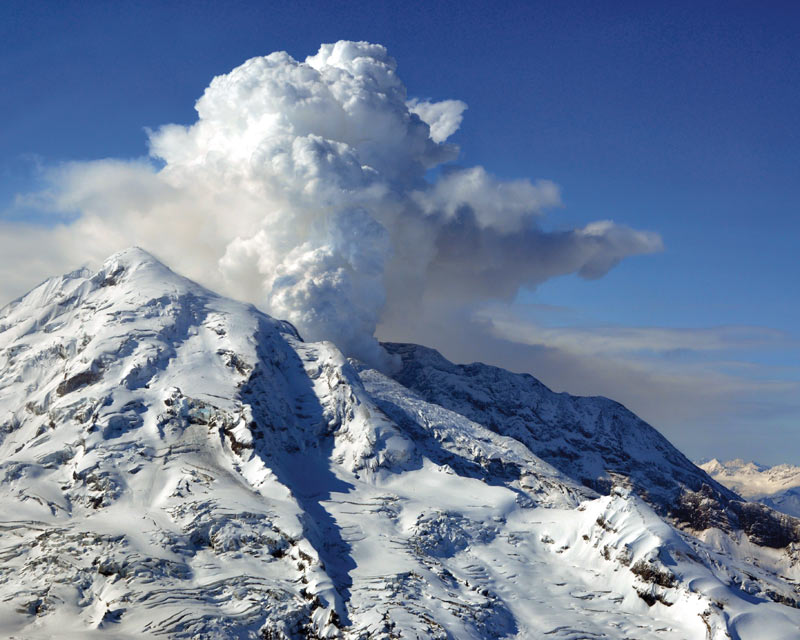The phrase “Ring of Fire” sounds as if it belongs in a Tolkien epic, but on the Kenai Peninsula this geological phenomenon – referring to volcanic activity on the boundary of the Pacific Tectonic Plate – has written an epic of its own, starring the five volcanoes visible across the Cook Inlet.
These volcanoes – Spurr, Redoubt, Iliamna, Augustine, and Douglas – lie within the north-south spine of the Chigmit Mountains and form the easternmost part of the Aleutian volcanic arc.
Cook Inlet sits atop a subduction zone where the Pacific Plate dives beneath the North American plate at roughly the same speed as growing fingernails.
The tremendous energy generated by this subduction is responsible for pushing up the area’s mountain ranges, shaking the surface with frequent and sometimes devastating earthquakes, and heating material from the Earth’s mantle which occasionally finds its way to the surface as lava.
However, with the exception of Redoubt’s spring 2009 eruption, these five magnificent mountains have spent the last three decades in relative quiet. In 2006, the 4,134-foot island mountain of Augustine burped steam and ash tens of thousands of feet into the air, but what seemed to be a precursor to an eruption – like the one that rained ash on Homer and Seldovia in 1986 – instead petered out.
Volcanoes visible from the Kenai Peninsula, from north to south, are:
Mount Spurr
11,070 feet tall
Erupted: 1953, 1992
Mount Redoubt
10,197 feet tall
Erupted: March 15, 2009, sending ash plumes from 30,000 to 60,000 feet high.
Dec. 14, 1989 – June 1990, creating 12-mile-high ash clouds.
Mount Iliamna
10,016 feet
Non-eruptive events recorded since 1741.
Mount Augustine
4,134 feet
A volcanic island in Kamishak Bay.
Erupted: 1883, 1908, 1935, 1963-64, 1976, 1986 and 2005-06.
Mount Douglas
7,020 feet
Inactive since the most recent Ice Age.

